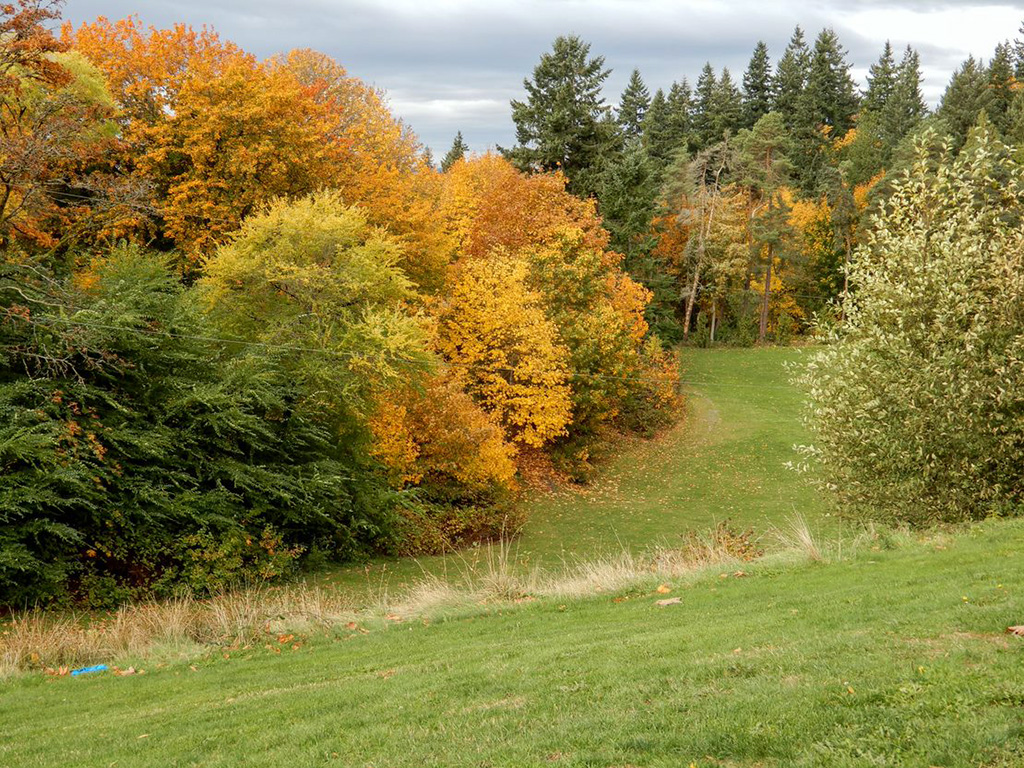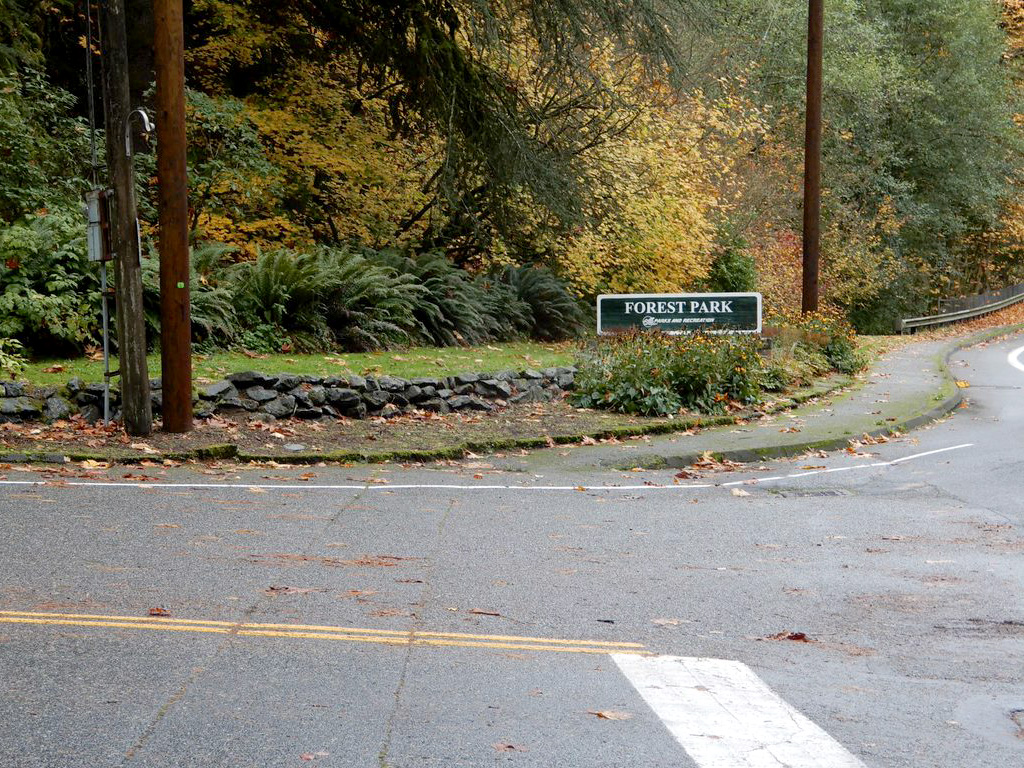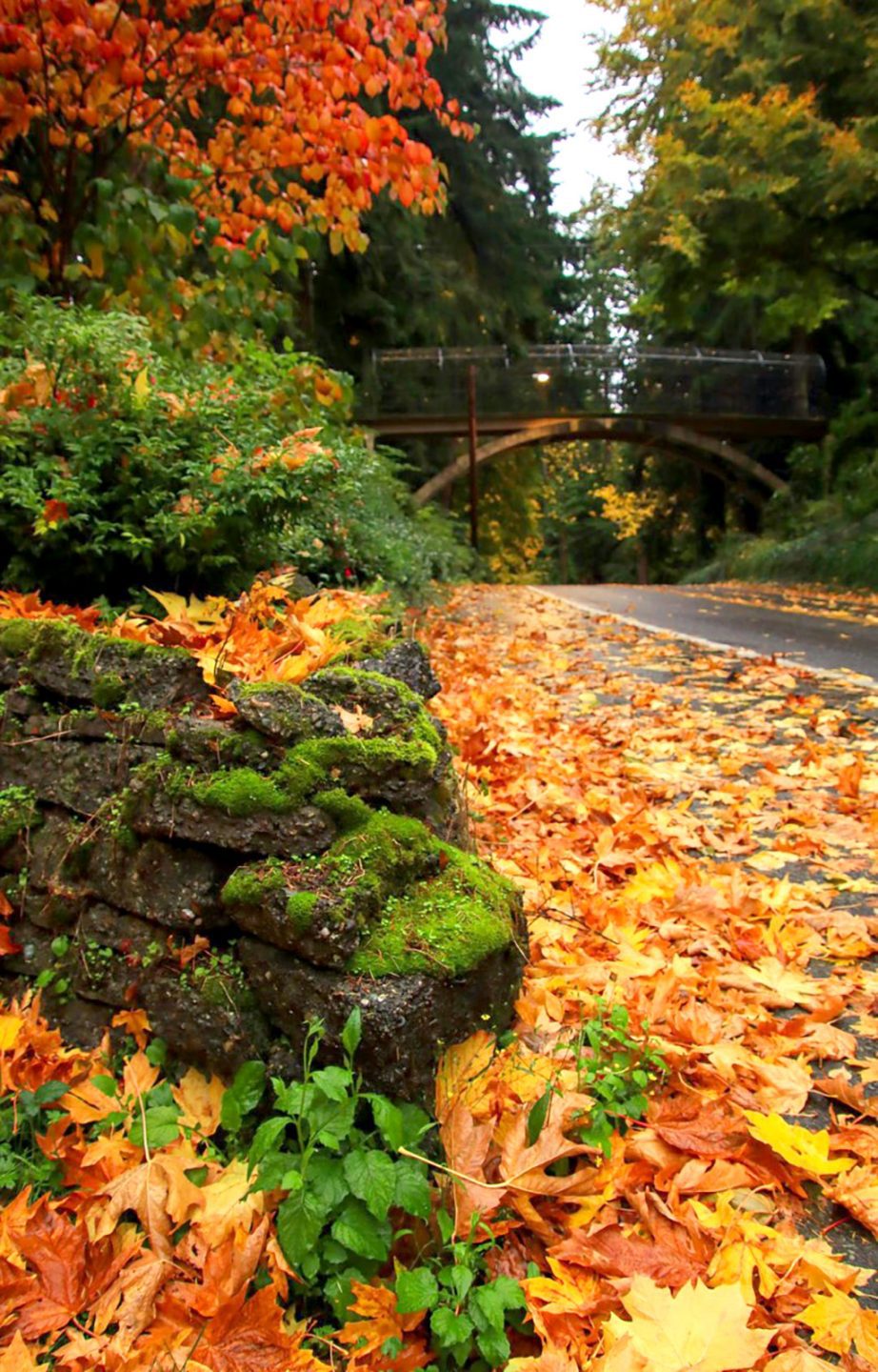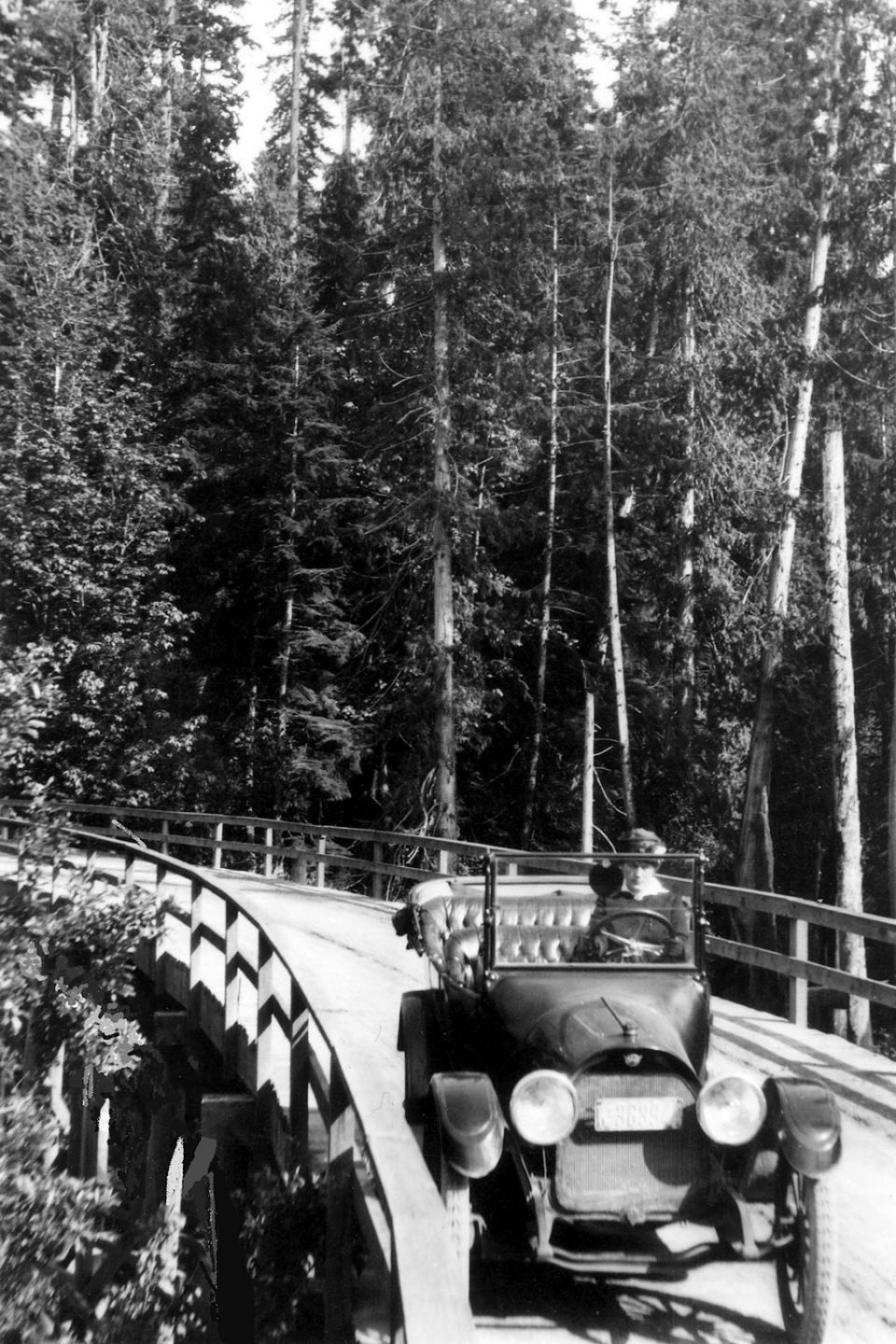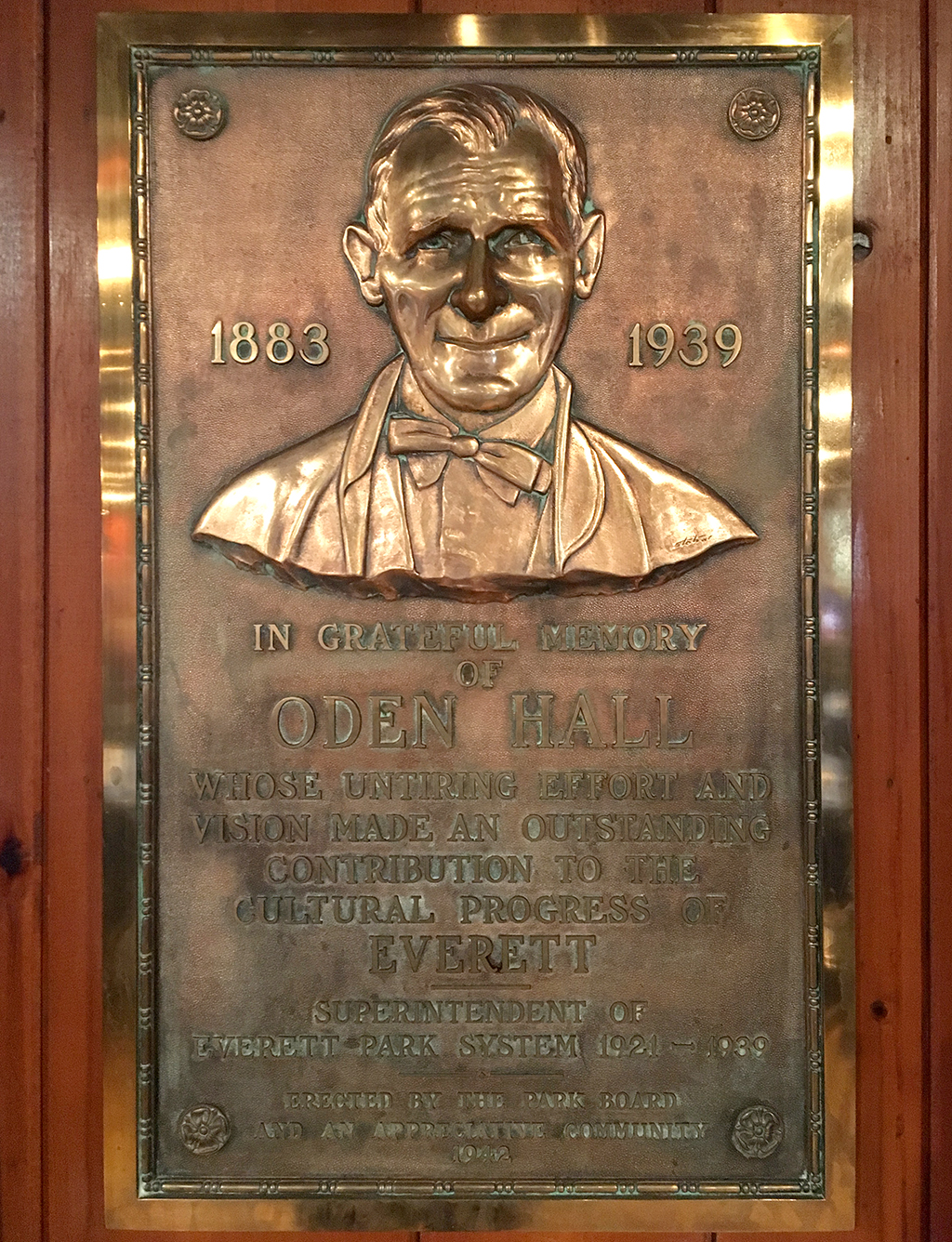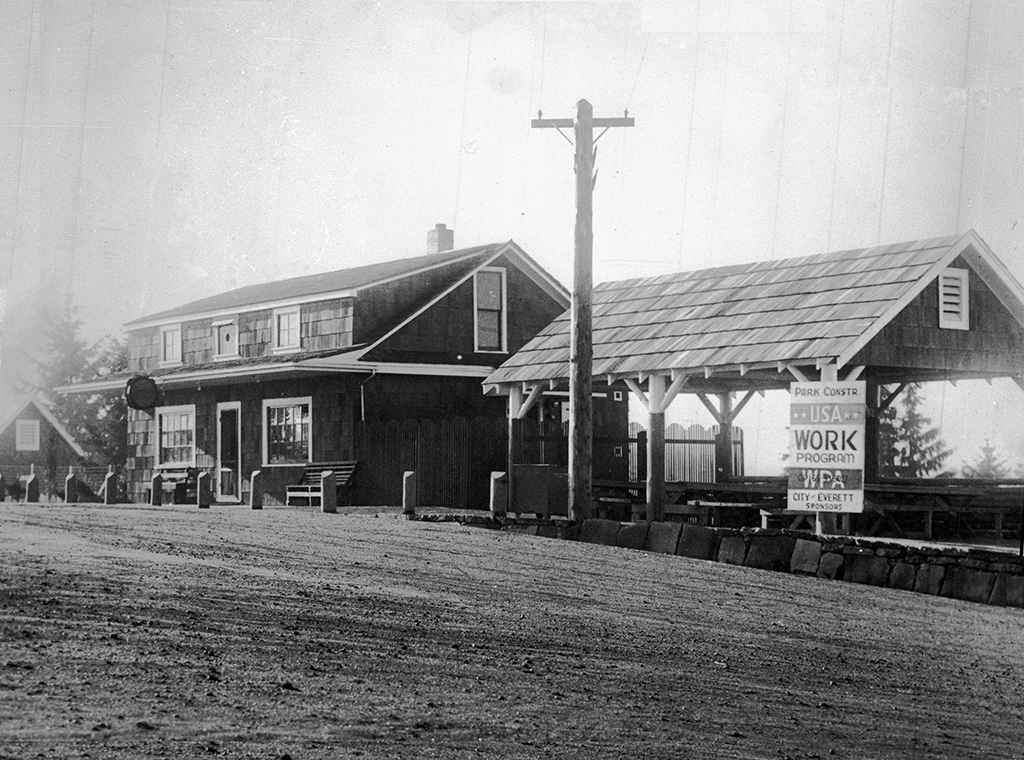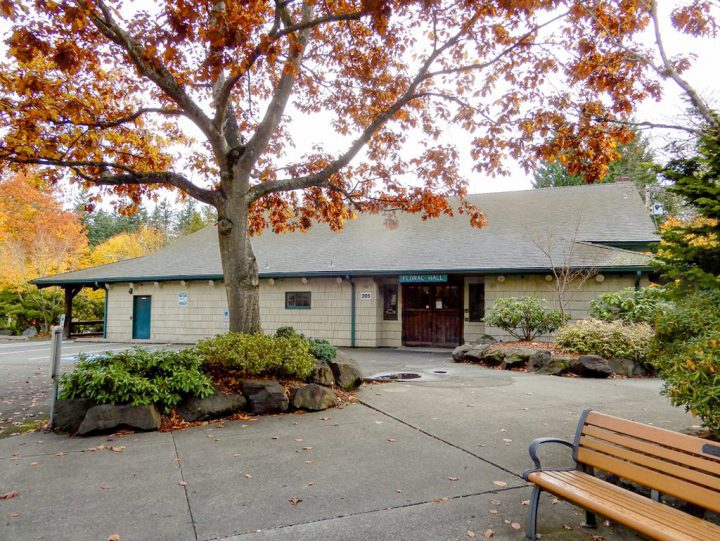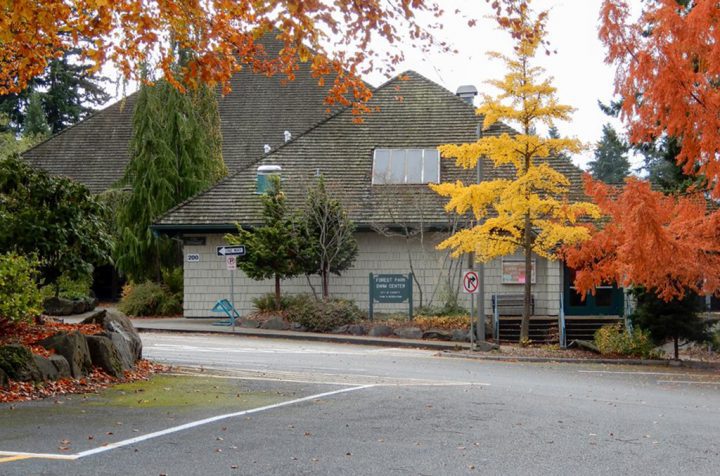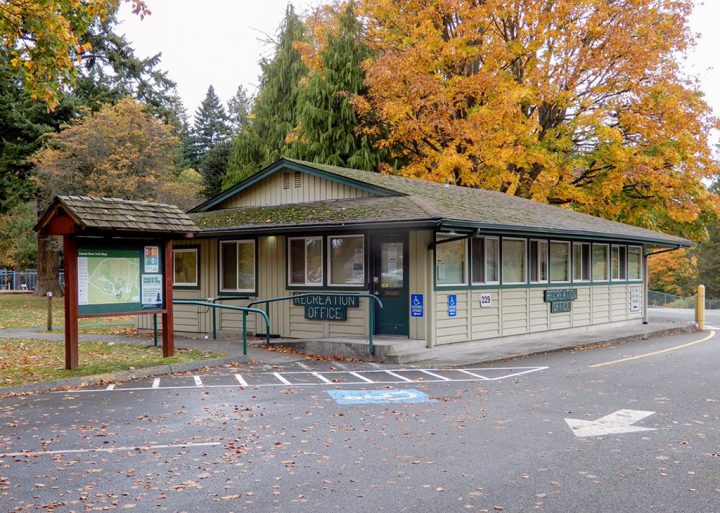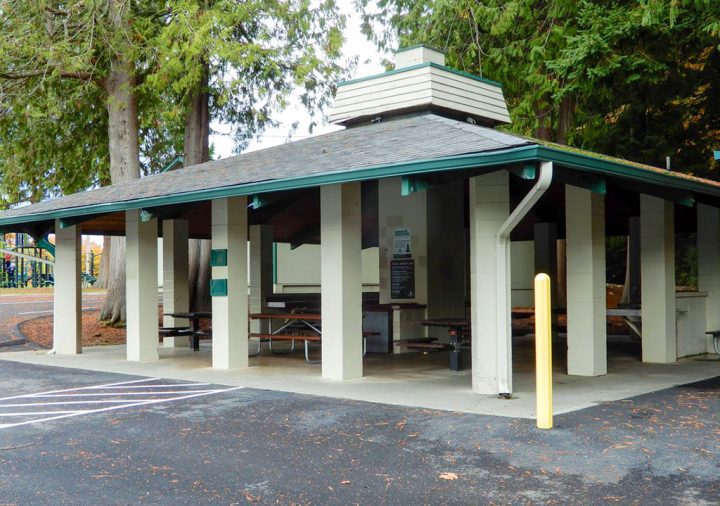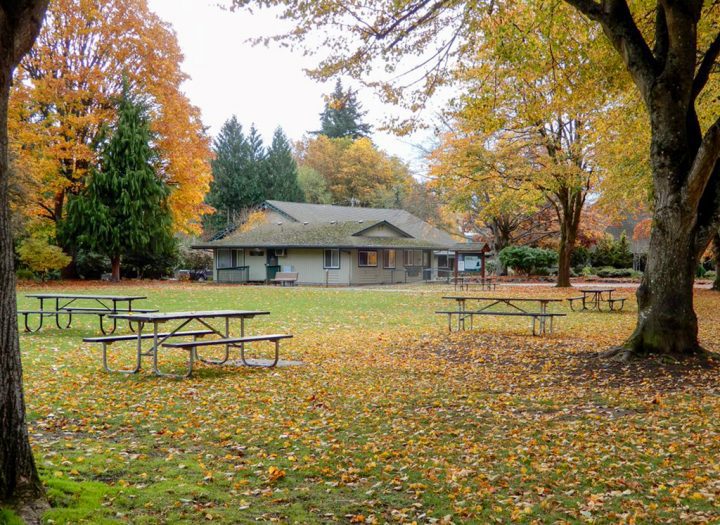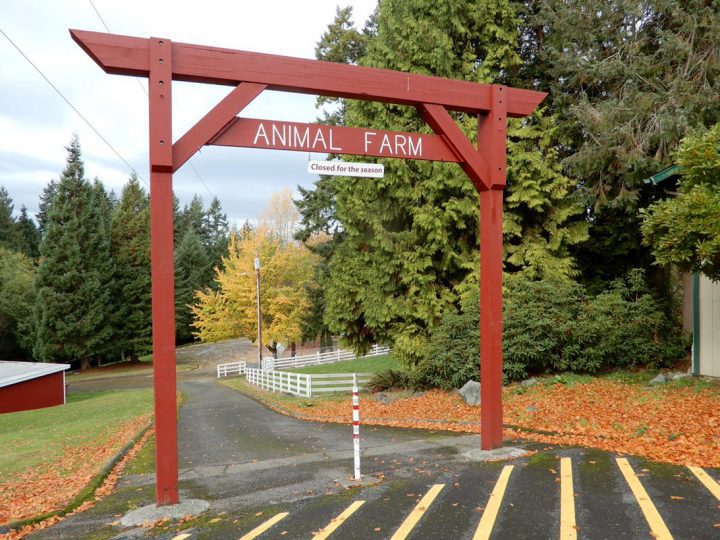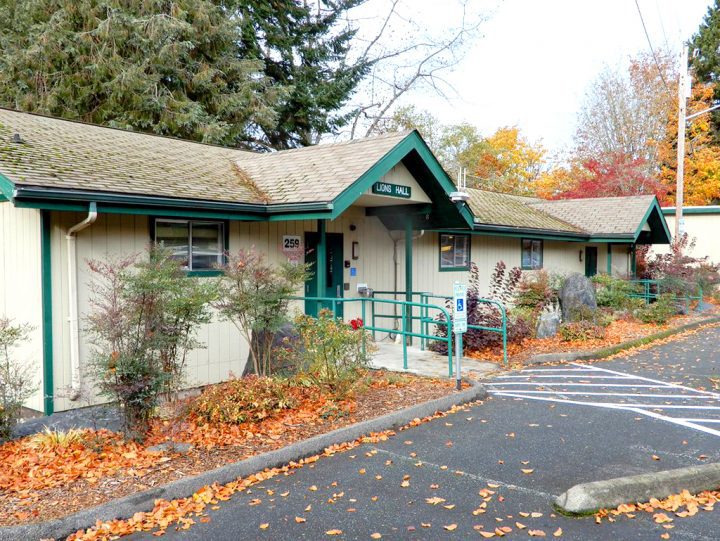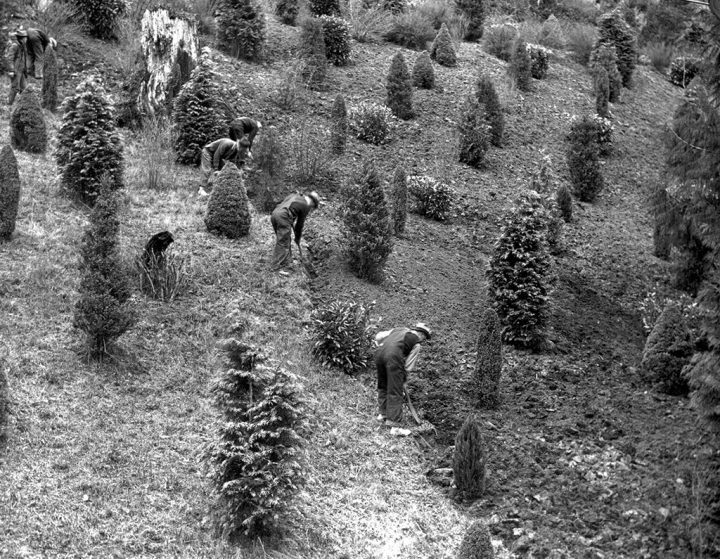Forest Park (Everett)
by Margaret Riddle
-
Forest Park is Everett’s largest park and its second oldest, dating to 1894 when the city purchased two five-acre tracts, miles away from the town center. For years it was a place for picnicking, hunting and fishing in a forest setting close to home. Eighty more acres were purchased in 1909 and 20 more in 1916, extending park boundaries to Puget Sound via Pigeon Creek 1.
Forest Park was officially named in 1913, about the time that the Mukilteo Highway — now Mukilteo Boulevard — opened, dividing the park into upper and lower sections. The uphill portion, lying to the south of the boulevard, is what you will walk in this circular walking tour, which can be entered at any point.
The park’s formative years revolved around a zoo (1914-1976) and a design transformation during the 1930s Great Depression. England-born parks superintendent Oden Hall (1883-1939) conducted one of Washington’s largest Works Progress Administration (WPA) projects, employing hundreds of workers to clear land, build park structures, plant specimen and native trees and build cages for the zoo animals. They also constructed rock walls, some still in place, and built an extensive trail system, a playfield, and Floral Hall, a community exhibition building that opened in 1940 and is now on the National Register of Historic Places. Hall served as parks superintendent from 1919 to 1939 but the Hall family leadership with Everett parks continued until 1972 under Oden’s brother Walter and Walter’s son John.
Over the years, Forest Park has hosted thousands of group events including annual workers picnics, Farm Labor Party gatherings in the early 1900s, flower and garden shows, arts, crafts and music events, an annual Rock and Gem Society show, the African-American Nubian Jam festival, historical displays and programs. For generations the park has been a place where families and friends can meet and play.
Parks maintenance is ongoing, with large renovation projects happening in the 1960s through the 1980s and presently. In 2014 the Washington Department of Natural Resources began a major park cleanup and restoration project, removing invasive English ivy and laurels and planting young trees along Mukilteo Boulevard. Newer trees planted include sequoia, cedar, pine, and vine maple.
You are encouraged to check out Forest Park’s easy and challenging trails, which are not part of this tour. A large sign with a trail map can be found at Point 6.
Transit riders should use the crosswalk with a traffic light on Mukilteo Boulevard to enter the park’s east entrance at Point 1. Everett residents may want to cross the 1993 arch pedestrian bridge from Federal Avenue which exits on Elk Hill Drive, then hike a short trail into the park. Car and bike riders can climb the hill from the east or west entrances to the parking area and begin this circular tour at any point. The tour involves a steep climb and a steep descent but points 3 through 10 are on flat surfaced walkways and roads.
Follow this main road, past a mossy stairway, both leading to the park’s upper area. On the east side of the road (on the left) is an interpretive sign explaining the importance of forest maintenance and the ongoing need for forest recovery programs.
Tour Stops
Bear Cage
Forest Park Zoo
Floral Hall
Forest Park Swim Center
Forest Park Recreation Center
Picnic Shelter/Sports Area
Rotary Centennial Playground
Picnic Area
Animal Farm
Lion’s Building/Spruce Hall/Fieldhouse
WPA Plantings, Forest Park
West Entrance, Forest Park
Historic Everett Fire Station No. 4
Bear Cage
Bear Cage (Forest Park)

Forest Park Zoo
Forest Park Zoo
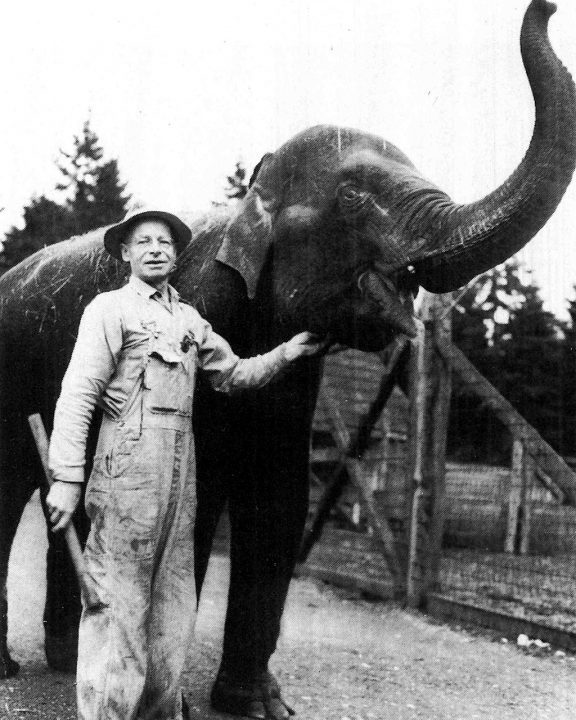
West Entrance, Forest Park
E Mukilteo Blvd & Forest Park Dr.
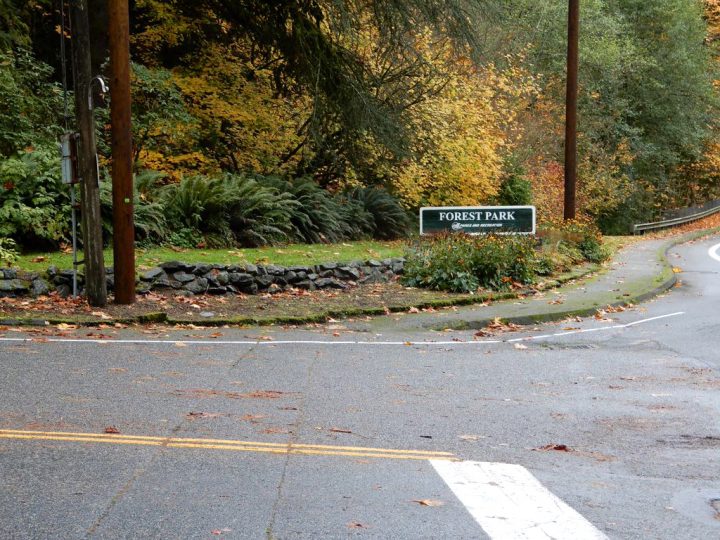
Historic Everett Fire Station No. 4
701 E Mukilteo Boulevard
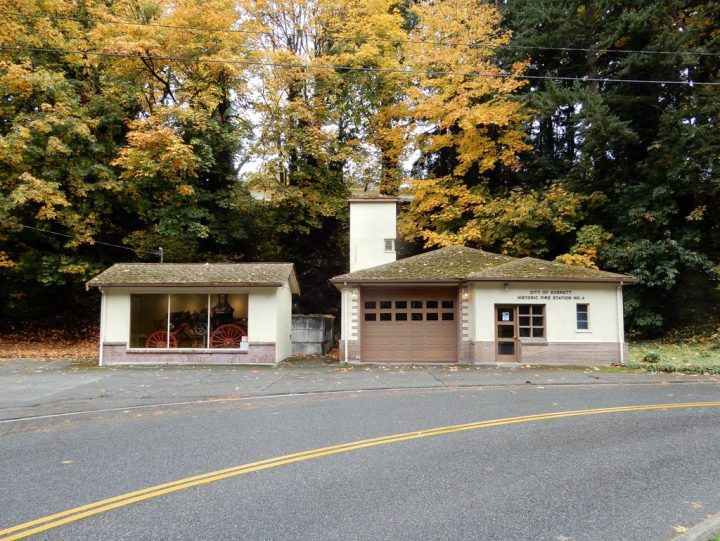

Brought to you by HistoryLink
This tour made possible with support from
